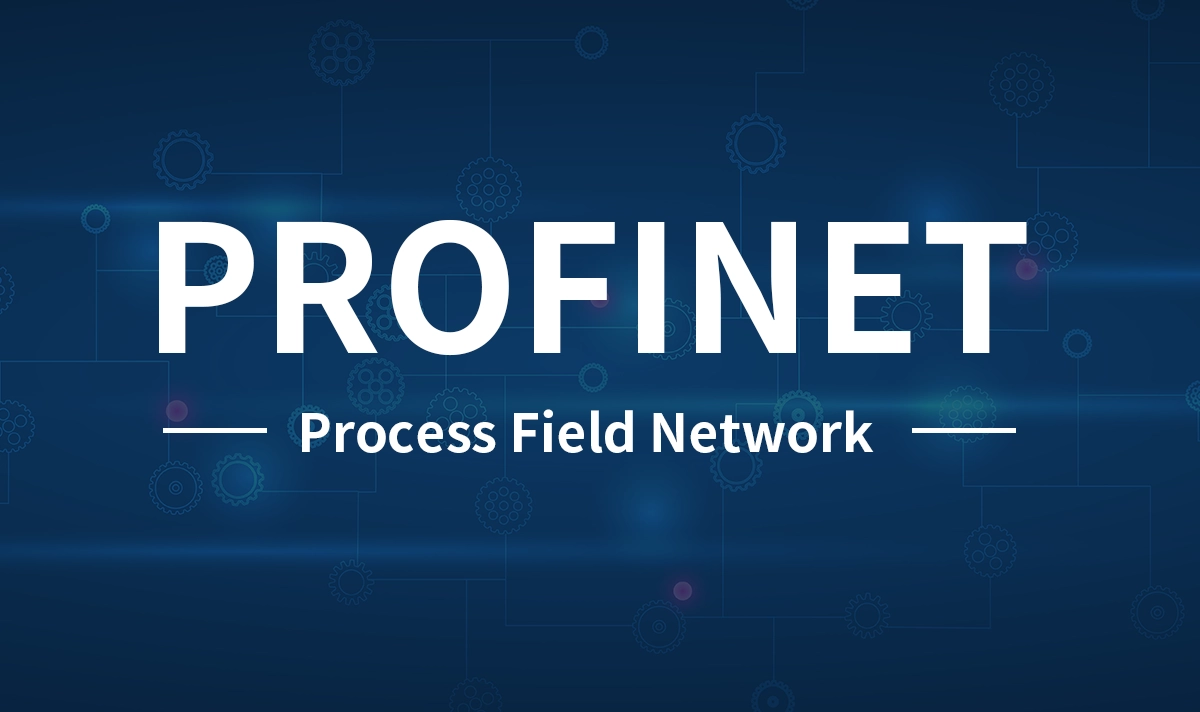
PROFINET (Process Field Network) is one of the leading Industrial Ethernet standards defined by PROFIBUS & PROFINET International (PI). Designed for real-time communication, high reliability, and seamless integration with automation devices, PROFINET enables modern factories to connect controllers, sensors, actuators, and edge systems with deterministic performance.
This guide explains the terminology, architecture, communication mechanisms, and hardware considerations associated with PROFINET, while highlighting how LINK-PP integrated RJ45 connectors enhance industrial network reliability.
➡️ What Is PROFINET?
PROFINET is an open Industrial Ethernet protocol that supports real-time data exchange between industrial controllers (PLCs, DCS) and field devices. It is built on standard IEEE 802.3 Ethernet but adds deterministic communication, network diagnostics, and device configuration features required in automation environments.
Key Technical Characteristics
Real-Time Determinism: Essential for motion control and time-critical operations
Scalable Performance: Ranges from standard real-time to isochronous real-time
Flexible Topologies: Line, star, ring, tree, and mixed architectures
IT/OT Integration: Combines industrial field communication with standard IP protocols
High Reliability: Supports redundancy, fast recovery, and robust error detection
➡️ How PROFINET Communication Works
PROFINET defines three communication classes to meet different industrial requirements. Each level builds upon standard Ethernet, adding timing and determinism mechanisms.
PROFINET Communication Classes
1. PROFINET NRT — Non-Real Time
Based on standard TCP/IP
Used for configuration, parameterization, and diagnostics
Suitable for applications not requiring deterministic timing
2. PROFINET RT — Real Time
Bypasses TCP/IP to reduce latency
Cycle times typically 1–10 ms
Used for general automation tasks (I/O, sensors, drives)
3. PROFINET IRT — Isochronous Real Time
Uses time-scheduling and bandwidth reservation
Cycle times <1 ms with jitter <1 µs
Required for multi-axis motion control and synchronized robotics

➡️ PROFINET Architecture and Device Classes
PROFINET organizes devices into functional roles to streamline configuration and communication.
▷ Device Classes
IO-Controller: Central controller, such as a PLC
IO-Device: Field devices (I/O modules, sensors, actuators)
IO-Supervisor: Engineering, monitoring, or diagnostic tools
▷ PROFINET Topologies
PROFINET supports multiple network layouts depending on installation design:
Star topology: Common with switches and modular network designs
Line topology: Cost-saving, used for daisy-chained field devices
Ring topology: Offers redundancy with Media Redundancy Protocol (MRP)
➡️ Technical Features and Advantages of PROFINET
▶ Robust Real-Time Performance
PROFINET achieves deterministic communication through traffic prioritization, dedicated real-time channels, and integrated synchronization (in IRT).
▶ Integration With Existing Systems
Because PROFINET runs over standard Ethernet hardware, it easily integrates with corporate networks, SCADA systems, and Industrial IoT platforms.
▶ High Scalability
Supports simple sensors, complex motion systems, and high-bandwidth applications all within the same network.
▶ Advanced Diagnostics
Device naming and identification
Asset management
Real-time status monitoring
Automatic device replacement without reconfiguration
➡️ Common PROFINET Use Cases
1. Factory Automation
Assembly lines, robotic control, packaging systems, and conveyor systems require real-time data exchange.
2. Process Automation
Chemical, pharmaceutical, and energy sectors use distributed I/O modules and safety-critical devices.
3. Motion Control Systems (PROFINET IRT)
Precision robotics, CNC machines, and synchronized multi-axis equipment.
4. Industrial IoT & Smart Manufacturing
Connecting field devices to edge gateways and analytics platforms.
➡️ Hardware Requirements for Reliable PROFINET Networks
While PROFINET uses standard Ethernet physical layers, industrial environments demand reinforced connectors, magnetics, and EMI-hardened components.
Key Hardware Considerations
Shielded twisted-pair cabling with industrial-grade insulation
Robust RJ45 connectors with enhanced EMI protection
High-quality integrated magnetics supporting 10/100/1000Base-T
Mechanical durability against vibration, shock, and temperature fluctuations
How LINK-PP Integrated RJ45 Connectors Support PROFINET Performance

High-reliability connectors are critical in industrial automation networks. LINK-PP’s RJ45 Magjack solutions provide stable, low-noise Ethernet performance suitable for PROFINET RT and NRT environments.
Optimized Magnetics: Ensures stable signal integrity for 10/100/1000 Mbps PROFINET communication
Excellent EMI Suppression: Reduces common-mode noise in harsh industrial conditions
Industry-Grade Shielding: Metal shell structures protect against electromagnetic interference
Long Service Life: Suitable for industrial PLCs, I/O modules, HMIs, and embedded PROFINET devices
Compact Integration: Saves PCB space and improves thermal performance
These connectors provide the physical reliability needed for PROFINET networks to operate at peak performance, especially in environments prone to vibration, electrical noise, or extreme temperatures.
➡️ PROFINET vs. Other Industrial Ethernet Protocols
PROFINET vs. EtherNet/IP
Feature | PROFINET | EtherNet/IP |
|---|---|---|
Real-time class | RT, IRT | CIP Sync (less deterministic) |
Motion control | Strong (IRT) | Moderate |
Determinism | Very high | Medium |
Topologies | Flexible | Star-centric |
Adoption | Strong in EU/Asia | Strong in North America |
PROFINET vs. EtherCAT
EtherCAT is faster for motion applications
PROFINET offers broader interoperability and easier integration
Hardware requirements for EtherCAT are more specialized
➡️ Summary
PROFINET is a powerful and flexible Industrial Ethernet standard designed for automation environments requiring reliability, determinism, and scalable performance. Its real-time communication classes (RT and IRT), expansive device ecosystem, and diagnostic features make it a cornerstone of modern industrial networking.
By pairing PROFINET systems with high-quality hardware—such as LINK-PP integrated RJ45 connectors—engineers can achieve improved signal integrity, long-term reliability, and stable network performance.
LINK-PP’s products help ensure smooth operation across industrial controllers, I/O systems, sensors, and networking modules, supporting the full potential of PROFINET-enabled automation.
➡️ Also SEE
Enhance your understanding of industrial networking with these related technical resources from LINK-PP:
Distributed Control Systems (DCS) in Industrial Automation
A quick guide to DCS architecture, redundancy, and industrial use cases.PLC (Programmable Logic Controller) Guide for Industrial Automation
Key concepts of PLC operation, programming, and communication interfaces
What Is Electromagnetic Interference (EMI)?
A clear explanation of EMI sources and suppression methods in electronic systems.What Are SCADA Systems?
A concise overview of Supervisory Control and Data Acquisition architectures and applications.Understanding I/O Modules in Automation and Networking
A practical guide to digital, analog, and networked I/O modules used in industrial control.TCP/IP Model: Network Communication Layers and Data Exchange Explained
A complete breakdown of the TCP/IP stack and how data moves across modern networks.IEEE 802.3 Ethernet Standard Explained
A technical introduction to Ethernet physical layers, MAC functions, and frame structures.


